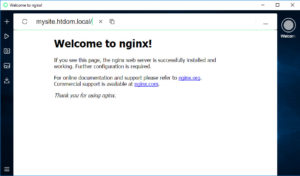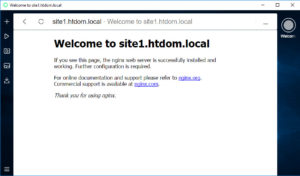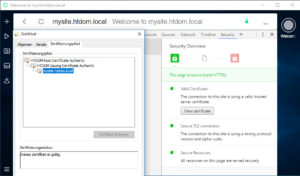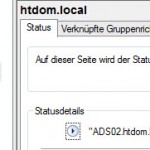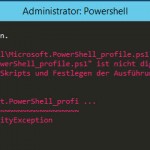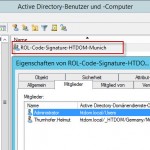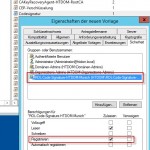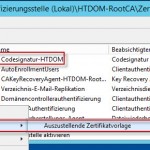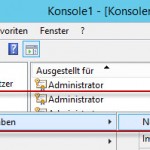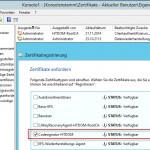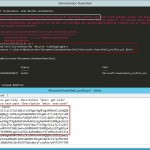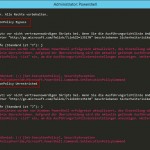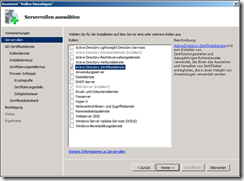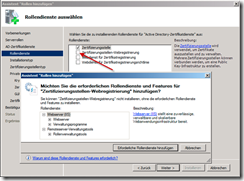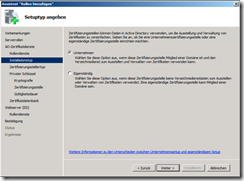Hallo zusammen,
um einen nginx Webserver installieren zu können, benötigt es ein paar Vorbereitungen.
In diesen Beispiel verwende wir einen Ubuntu 16.04 LTS Server in einer Virtuellen Umgebung.
Nach der Grundinstallation des Servers, muss der Server auf den neusten Stand gebracht werden.
Nach dem Login, wechselt man zum root Benutzer mit:
sudo -i oder sudo su - apt update -y && apt upgrade -y reboot
Nach dem das System up to date ist, konfiguriert man den Server mit einer statischen IP-Adresse.
vim /etc/network/interfaces auto enp0s3 iface enp0s3 inet static address 192.168.xxx.xxx netmask 255.255.255.0 gateway 192.168.xxx.xxx dns-search htdom.local dns-nameservers 192.168.xxx.xxx 192.168.xxx.xxx systemctl restart networking.service systemctl status networking.service
nginx Webserver installation und überprüfen
apt-get install nginx apache2-utils ssh dpkg -l | grep nginx
Standardverzeichnisse nach der Installation
tree /etc/nginx
/etc/nginx/
├── conf.d
├── fastcgi.conf
├── fastcgi_params
├── koi-utf
├── koi-win
├── mime.types
├── nginx.conf
├── proxy_params
├── scgi_params
├── sites-available
│ └── default
├── sites-enabled
│ └── default -> /etc/nginx/sites-available/default
├── snippets
│ ├── fastcgi-php.conf
│ └── snakeoil.conf
├── uwsgi_params
└── win-utf
tree /var/www
/var/www/
└── html
└── index.nginx-debian.html
Grundlegende nginx Befehle
## Mit folgenden Befehlen kann man den nginx Server starten/stoppen/reloaden/configtest durchführen bzw. den Status abfragen
##
service nginx {start|stop|restart|reload|force-reload|status|configtest|rotate|upgrade}
## Der wichtigste Befehl nach jeder Konfigurationsanpassung ist immer.
##
nginx -t
nginx: the configuration file /etc/nginx/nginx.conf syntax is ok
nginx: configuration file /etc/nginx/nginx.conf test is successful
oder
service nginx configtest
* Testing nginx configuration
...done.
Mit folgenden Befehl überprüft man, ob der nginx Server auf Port 80 lauscht
netstat -antlp | grep nginx tcp 0 0 0.0.0.0:80 0.0.0.0:* LISTEN 4236/nginx -g daemo tcp6 0 0 :::80 :::* LISTEN 4236/nginx -g daemo
PID File Anpassung in der nginx.service Datei
## Nach jedem Neustart des nginx Services, wird eine Fehlermeldung ausgegeben, das die nginx.pid nicht gelesen/gefunden wird.
## Daher wurde hier eine kleine Anpassung an der nginx.service & nginx.conf Datei vorgenommen.
##
systemctl status nginx.service
● nginx.service - A high performance web server and a reverse proxy server
Loaded: loaded (/lib/systemd/system/nginx.service; enabled; vendor preset: enabled)
...
Jan 19 16:08:53 web01 systemd[1]: Starting A high performance web server and a reverse proxy server...
Jan 19 16:08:53 web01 systemd[1]: nginx.service: Failed to read PID from file /run/nginx.pid: Invalid argument
vim /lib/systemd/system/nginx.service
[Service]
Type=forking
PIDFile=/var/run/nginx.pid
...
ExecStop=-/sbin/start-stop-daemon --quiet --stop --retry QUIT/5 --pidfile /var/run/nginx.pid
. . .
vim /etc/nginx/nginx.conf
http {
# pid /var/run/nginx.pid;
. . .
}
systemctl restart nginx.service
systemctl daemon-reload
systemctl status nginx.service
● nginx.service - A high performance web server and a reverse proxy server
Loaded: loaded (/lib/systemd/system/nginx.service; enabled; vendor preset: enabled)
...
Jan 19 16:10:00 web01 systemd[1]: Starting A high performance web server and a reverse proxy server...
Jan 19 16:10:00 web01 systemd[1]: Started A high performance web server and a reverse proxy server.
Erste Webseite konfigurieren
## Als erstes entfernen wir den Standardlink unter sites-enabled und machen eine Sicherungskopie der /etc/nginx/default Datei.
unlink /etc/nginx/sites-enabled/default
mv /etc/nginx/sites-available/default{,.old}
mv /var/www/html/index.nginx-debian.html /var/www/html/index.html
mv /var/www/html/ /var/www/mysite_htdom_local
vim /etc/nginx/sites-available/mysite.htdom.local
## Default Server Konfiguration ohne https und rewrite
##
server {
listen 80;
listen [::]:80;
server_name mysite.htdom.local;
root /var/www/mysite_htdom_local;
index index.html;
access_log /var/log/nginx/access_mysite_htdom_local.log;
error_log /var/log/nginx/error_mysite_htdom_local.log;
}
ln -s /etc/nginx/sites-available/mysite.htdom.local /etc/nginx/sites-enabled/
systemctl reload nginx.service
Virtuellen Host konfigurieren
mkdir -p /var/www/site1_htdom_local
sudo chown -R root:root /var/www/site1_htdom_local
vim /etc/nginx/sites-available/site1.htdom.local
## Default Server Konfiguration ohne https und rewrite
##
server {
listen 80;
listen [::]:80;
server_name site1.htdom.local;
root /var/www/site1_htdom_local;
index index.html;
access_log /var/log/nginx/access_site1_htdom_local.log;
error_log /var/log/nginx/error_site1_htdom_local.log;
}
ln -s /etc/nginx/sites-available/site1.htdom.local /etc/nginx/sites-enabled/
systemctl reload nginx.service
ls -la /etc/nginx/sites-enabled/
...
lrwxrwxrwx 1 root root 45 Jan 19 18:45 mysite.htdom.local -> /etc/nginx/sites-available/mysite.htdom.local
lrwxrwxrwx 1 root root 44 Jan 20 15:58 site1.htdom.local -> /etc/nginx/sites-available/site1.htdom.local
Webserver SSL Zertifikat erstellen
cd /opt/ca/IssuingCA/
openssl genrsa -aes256 -out private/mysite.htdom.local.key 2048 -rand private/.randIssuingCA
chmod 0400 private/mysite.htdom.local.key
openssl req -new -key private/mysite.htdom.local.key -out newcerts/mysite.htdom.local.csr -config ca-config.cnf
Enter pass phrase for private/mysite.htdom.local.key:
You are about to be asked to enter information that will be incorporated
into your certificate request.
What you are about to enter is what is called a Distinguished Name or a DN.
There are quite a few fields but you can leave some blank
For some fields there will be a default value,
If you enter '.', the field will be left blank.
-----
Country Name (2 letter code) [DE]:
State or Province Name (Bayern) [Bayern]:
Locality Name (Muenchen) [Muenchen]:
Organization Name (Company name or your Name) [HTDOM Company GmbH]:
Organizational Unit Name (Department) [IT]:IT-Support
Common Name (Server FQDN or your Name) []:mysite.htdom.local
...
-----------------------------------------------------------------------
openssl ca -name IssuingCA -in newcerts/mysite.htdom.local.csr -out certs/mysite.htdom.local.crt -extensions server_cert -config ca-config.cnf
Using configuration from ca-config.cnf
Enter pass phrase for /opt/ca/IssuingCA/private/IssuingCA.key:
Check that the request matches the signature
Signature ok
Certificate Details:
Serial Number: 1 (0x1)
Validity
Not Before: Jan 22 13:14:33 2017 GMT
Not After : Jan 20 13:14:33 2027 GMT
Subject:
countryName = DE
stateOrProvinceName = Bayern
organizationName = HTDOM Company GmbH
organizationalUnitName = IT-Support
commonName = mysite.htdom.local
X509v3 extensions:
X509v3 Basic Constraints:
CA:FALSE
X509v3 Key Usage:
Digital Signature, Non Repudiation, Key Encipherment, Data Encipherment
X509v3 Extended Key Usage:
TLS Web Server Authentication
Authority Information Access:
CA Issuers - URI:http://mysite.htdom.local/cert/IssuingCA.html
X509v3 CRL Distribution Points:
Full Name:
URI:http://mysite.htdom.local/cert/IssuingCA.crl
Certificate is to be certified until Jan 20 13:14:33 2027 GMT (3650 days)
Sign the certificate? [y/n]:y
1 out of 1 certificate requests certified, commit? [y/n]y
Write out database with 1 new entries
Data Base Updated
-----------------------------------------------------------------------
## Keydatei erstellen mit Passwort (Ansonsten muss bei jeden Neustart des Servers die Passphrase eingegeben werden)
##
openssl rsa -in private/mysite.htdom.local.key | cat
-----BEGIN RSA PRIVATE KEY-----
MIIEpQIBAAKCAQEArbdXG8+BUxm0NvO2pWXdx/0L3z/Nb+enAWqL59PzOuL63vXv
...
WyYHO6o4iUROOuJ9I0t0KsEDqkgh+VEOtcVfh8/gZ9IXyfXFyRhu09Q=
-----END RSA PRIVATE KEY-----
vim private/mysite.htdom.local.with.pwd.key
chmod 0400 private/mysite.htdom.local.with.pwd.key
-----------------------------------------------------------------------
## Zertifikat auslesen und auf dem Webserver importieren
##
cat /opt/ca/IssuingCA/certs/mysite.htdom.local.crt | sed -n -e '/BEGIN\ CERTIFICATE/,/END\ CERTIFICATE/ p'
cat /opt/ca/IssuingCA/private/mysite.htdom.local.with.pwd.key
-----------------------------------------------------------------------
## Ansicht auf dem Webserver
##
ls -la certs/mysite.htdom.local.crt
-rw-r--r-- 1 root root 1866 Jan 22 14:21 certs/mysite.htdom.local.crt
ls -la private/mysite.htdom.local.with.pwd.key
-rw-r----- 1 root root 1675 Jan 22 14:22 private/mysite.htdom.local.with.pwd.key
chmod 0640 /etc/ssl/private/mysite.htdom.local.with.pwd.key
tree /var/www/mysite_htdom_local/
/var/www/mysite_htdom_local/
├── cert
│ ├── IssuingCA.crl
│ ├── IssuingCA.crt
│ ├── RootCA.crl
│ └── RootCA.crt
└── index.html
mysite.htdom.local Konfiguration anpassen
vim /etc/nginx/sites-available/mysite.htdom.local
## Default Server Konfiguration mit https und rewrite
##
server {
listen 80 default_server;
listen [::]:80 default_server;
## Redirect all HTTP requests to HTTPS with a 301 Moved Permanently response.
return 301 https://$host$request_uri;
access_log /var/log/nginx/access_mysite_htdom_local.log;
error_log /var/log/nginx/error_mysite_htdom_local.log;
}
server {
listen 443 ssl http2;
listen [::]:443 ssl http2;
root /var/www/mysite_htdom_local;
index index.html;
location / {
try_files $uri $uri/ /index.html;
}
## SSL Zertifikate
ssl_certificate /etc/ssl/certs/mysite.htdom.local.crt;
ssl_certificate_key /etc/ssl/private/mysite.htdom.local.with.pwd.key;
}
nginx -t
systemctl restart nginx.service
systemctl status nginx.service
Mit folgenden Befehl überprüft man, ob der nginx Server auf Port 80 und 443 lauscht
netstat -antlp | grep nginx tcp 0 0 0.0.0.0:80 0.0.0.0:* LISTEN 3776/nginx -g daemo tcp 0 0 0.0.0.0:443 0.0.0.0:* LISTEN 3776/nginx -g daemo tcp6 0 0 :::80 :::* LISTEN 3776/nginx -g daemo tcp6 0 0 :::443 :::* LISTEN 3776/nginx -g daemo
Um noch mehr Sicherheit in die TLS Verbindung zu bekommen, sollte man das TLS Protokoll und den Schlüsselaustausch (Chiper) eingrenzen.
Dazu gibt es eine sehr gute Webseite von Mozilla, mit dieser Mozilla SSL Configuration Generator kann man sich die passende Konfiguration für seinen Webserver zusammenklicken.
https://mozilla.github.io/server-side-tls/ssl-config-generator/
Modern: Ist Stand heute die sicherste Einstellung, hier wird nur noch TLSv1.2 verwendet
Intermediate: Ist ein kompromiss aus Sicherheit und Kompatibilität, hier wird noch TLSv1 TLSv1.1 TLSv1.2 verwendet.
Old: Ist die schlechterste Wahl, hier wird sogar noch das veraltete SSLv3 verwendet.
Alle heutigen Browser unterstützen bereits TLSv1.2 daher sollte man, wenn möglich Intermediate oder Modern benutzen.
Um die Konfiguration auf der Webseite vornehmen zu können, müssen wir erst die nginx und openssl Version herausfinden, dies funktioniert mit folgenden Befehl.
nginx -V nginx version: nginx/1.10.0 (Ubuntu) built with OpenSSL 1.0.2g 1 Mar 2016
Und so sieht meine Modern Konfiguration aus
## Default Server Konfiguration mit https/rewrite und Modern Konfiguration
##
server {
listen 80 default_server;
listen [::]:80 default_server;
## Redirect all HTTP requests to HTTPS with a 301 Moved Permanently response.
return 301 https://$host$request_uri;
access_log /var/log/nginx/access_mysite_htdom_local.log;
error_log /var/log/nginx/error_mysite_htdom_local.log;
}
server {
listen 443 ssl http2;
listen [::]:443 ssl http2;
root /var/www/mysite_htdom_local;
index index.html;
location / {
try_files $uri $uri/ /index.html;
}
## certs sent to the client in SERVER HELLO are concatenated in ssl_certificate
ssl_certificate /etc/ssl/certs/mysite.htdom.local.crt;
ssl_certificate_key /etc/ssl/private/mysite.htdom.local.with.pwd.key;
ssl_session_timeout 1d;
ssl_session_cache shared:SSL:50m;
ssl_session_tickets off;
## modern configuration. tweak to your needs.
ssl_protocols TLSv1.2;
ssl_ciphers 'ECDHE-ECDSA-AES256-GCM-SHA384:ECDHE-RSA-AES256-GCM-SHA384:ECDHE-ECDSA-CHACHA20-POLY1305:ECDHE-RSA-CHACHA20-POLY1305:ECDHE-ECDSA-AES128-GCM-SHA256:ECDHE-RSA-AES128-GCM-SHA256:ECDHE-ECDSA-AES256-SHA384:ECDHE-RSA-AES256-SHA384:ECDHE-ECDSA-AES128-SHA256:ECDHE-RSA-AES128-SHA256';
ssl_prefer_server_ciphers on;
## HSTS (ngx_http_headers_module is required) (15768000 seconds = 6 months)
add_header Strict-Transport-Security max-age=15768000;
}
SSL/TLS Verbindungstest kann man auf folgender Webseite durchführen
https://www.ssllabs.com/ssltest/index.html
Wenn man nun die Variante Modern nutzt, könnte die Handshake Simulation wie folgt aussehen.
Alle Browser die kein TLSv1.2 unterstützen, werden abgewiesen, bzw. können keine Verbindung zum Webserver aufbauen.
Viel Spaß beim ausprobieren
Gruß Helmut

